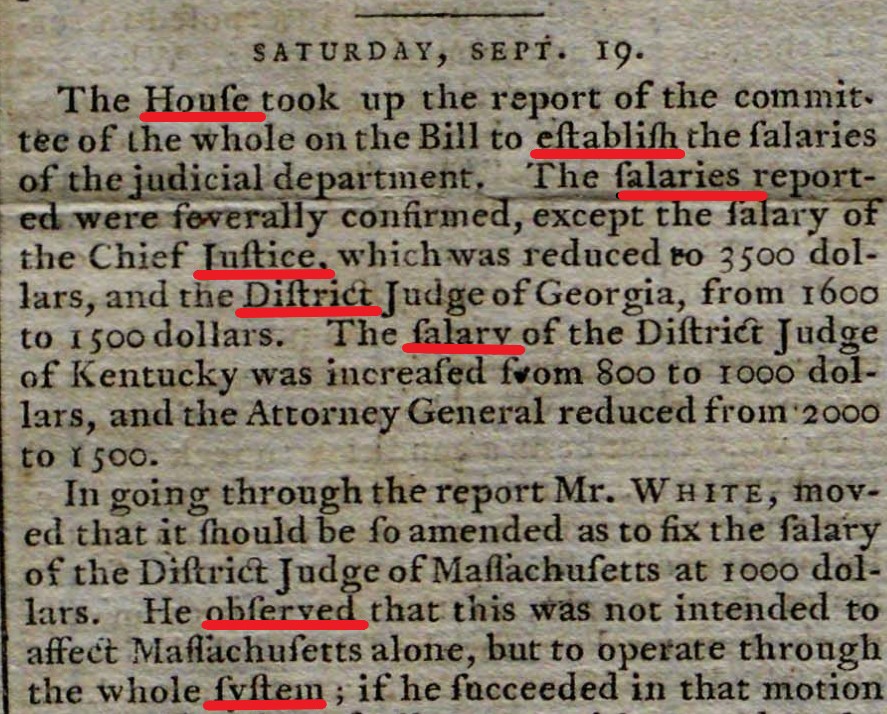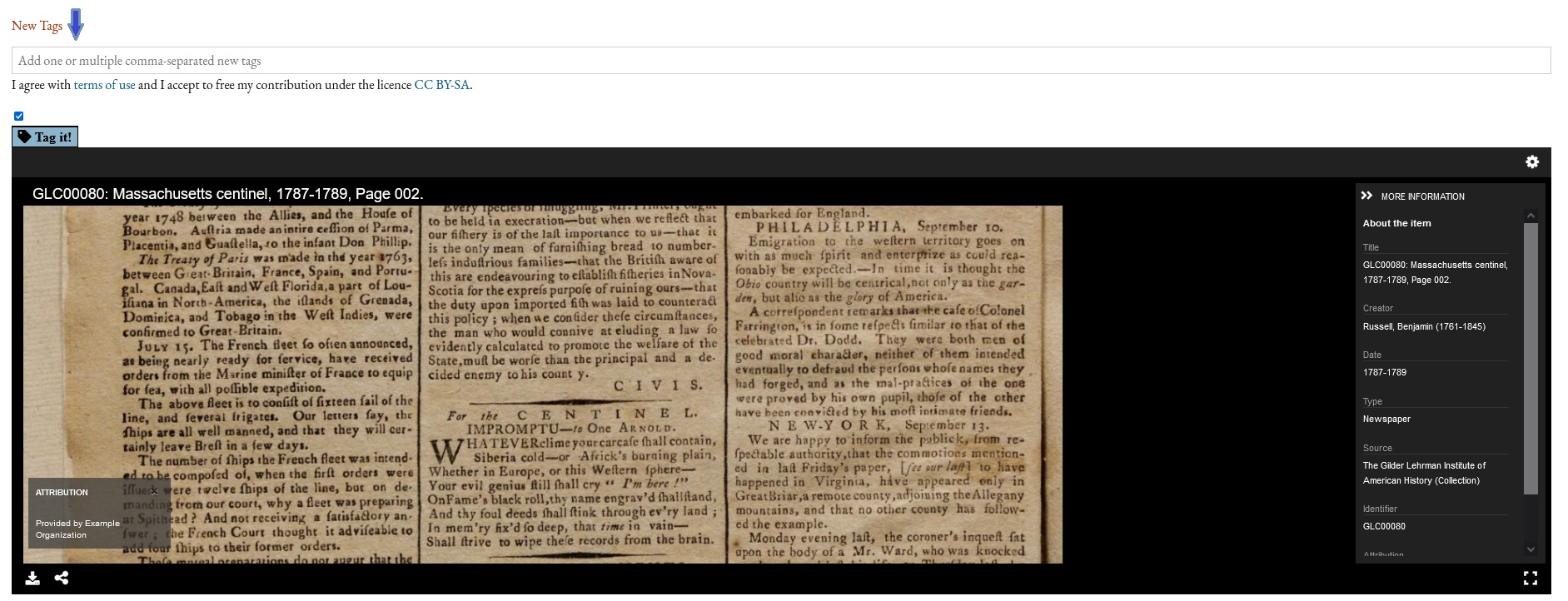The tags you create will shine a light on lives and events from the past and make the stories and topics easier to find in our catalog. With your help, students, teachers, and researchers will have increased digital access to these important documents.
So, what is the best way to tag? Tags that enhance searchability will identify people, events, places, or subjects. Please feel free to use this subject guide to get an idea of what types of tags you can use while reading.
We have created a walkthrough using the Gazette of the United States [No. 47 (September 23, 1789)] (GLC01063), page 1.
The type in these publications can be very tiny, but don’t be discouraged! You can open the image in a separate window or zoom in with the viewer to get a closer look at the text.
The Long S
While reading through the newspaper, you will likely encounter a unique letter that looks like an f but is in fact a letter known as the “long s.” The words underlined in red (pictured below) all use the “long s.” It’s helpful to remember that the “s” looks like an “f” that shouldn’t be there. If a word you are using as a tag has the “long s” in it, use an “s” rather than a “f” in the tag.

Tagging walkthrough
Now that you’re acquainted with some elements of reading eighteenth-century publications, let’s touch on what good tag options are. An easy start is reviewing for keywords in the text. Identify items of interest such as organizations, names, titles, places, events, and objects that would enhance the description of the record.
Note: Please view this list of Suggested Tags of what we currently use in the catalog. You can use these tags. However, if there is a tag that you don’t see listed here and you think it should be included feel free to do so!
What tags can we select from this passage?
Names:
- Wadsworth
- Smith
- Madison
- Sherman
- Vining
Subjects
- Amendments
- Committees
- Senate
- House of Representatives
- Constitution
- Legislation
How to Tag
People’s Names
For people's names there are couple of variations that may come up:
Names should be entered as First Name Last Name (e.g., George Washington) when possible but for instances such as women who are listed by their husband's names include the full printed name (i.e., Mrs. John Smith). Additionally, in the runaway advertisements, names of enslaved people should be tagged as Name (enslaved).
From time to time, you may not be able to find a full name. In that case, you can include the last name only. If there is a title (doctor, lord, earl) then include that as well in the same format Title Last Name (i.e., Doctor Smith).
It is not necessary to do additional research into a name unless you feel inclined to do so for names that would be considered incomplete.
Places
For places, please enter the city, colony or state, and country (if not one of the thirteen colonies) separately.
Topics
This may be the most open-ended of types of tags that you can enter. When reading the text if there is something that could enhance the record include it as a tag.
Where to Tag
Tags are entered in the field below (marked by an arrow). You can enter as many tags as you like by following each word with a comma. With examples from above, you can type in: Senate, House of Representatives, Legislation, Amendments.

After you click “Tag it!” your entries will be immediately visible.
